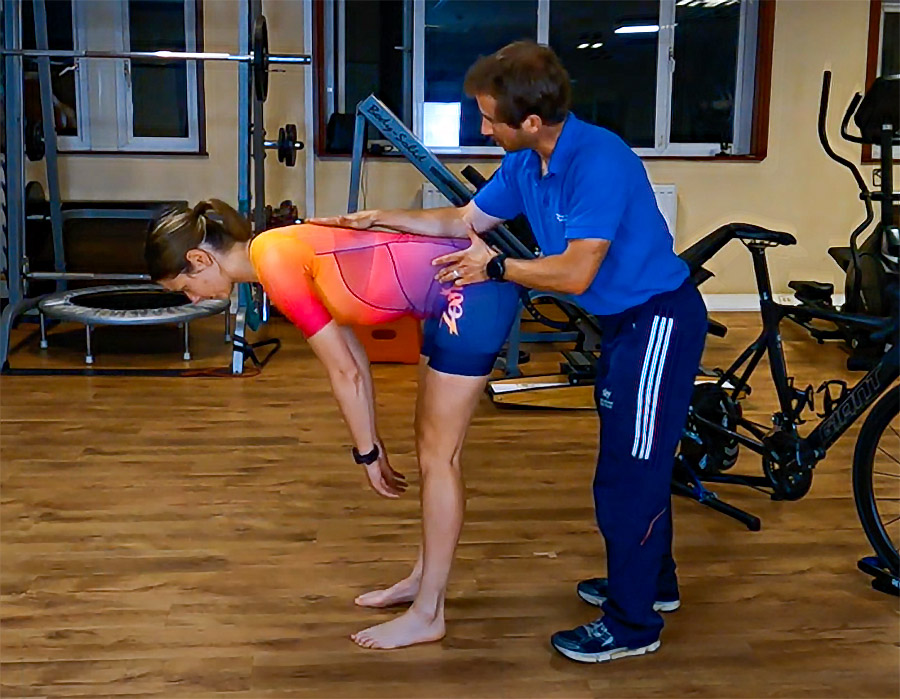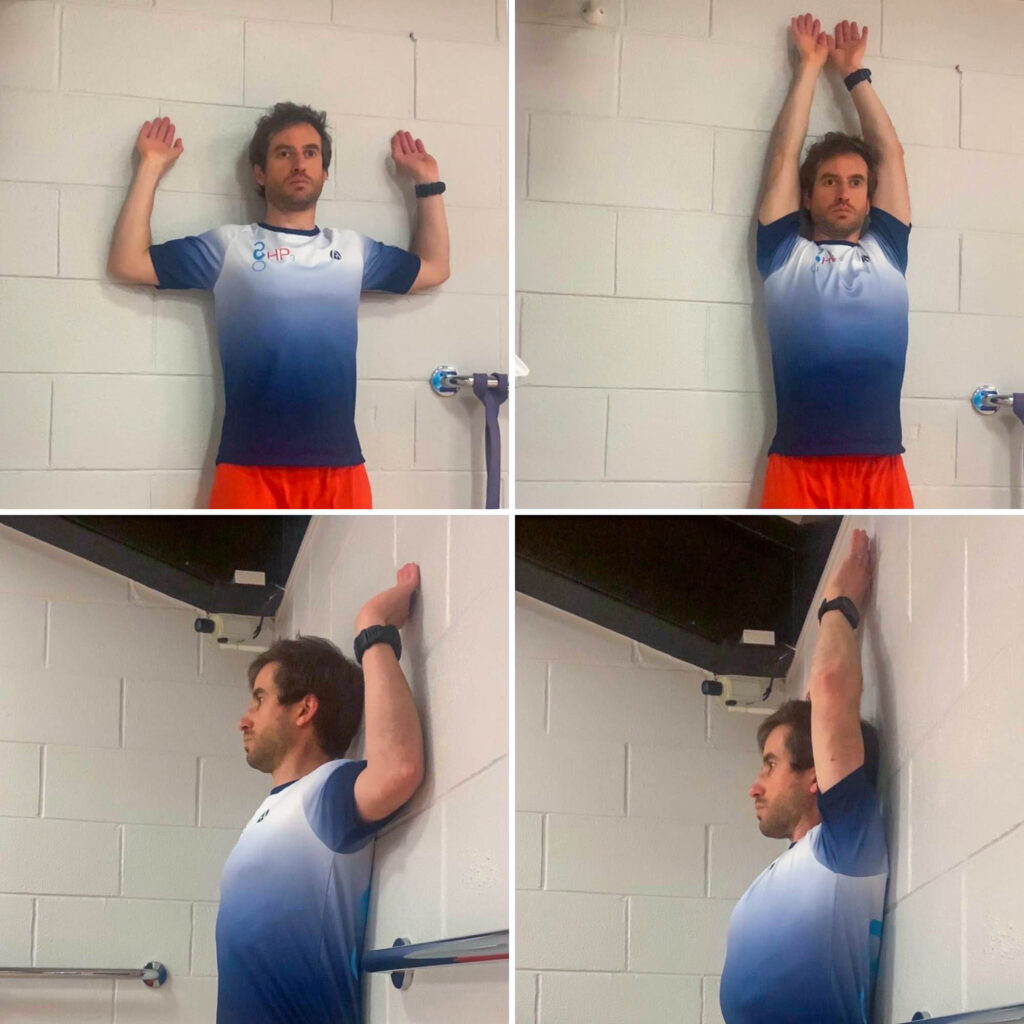As part of the onboarding process of new athletes, we all go through a series of questions and assessments with our athletes, but in terms of injury risk, which metrics are most important? There are many injury screening protocols out there. However, the research supporting their use is limited (Barr 2016), and common protocols, such as the Functional Movement Screen, cannot predict injury risk (Dorrel et al. 2015). This blog post will share some key factors I assess as a physiotherapist (physical therapist for the Americans), bike fitter and coach, giving you some immediately executable action points for your coaching practice.
Previous Injury Disclosure
In terms of injury risk, the most significant risk factor for sustaining an injury is having a previous injury—a 3.6-fold risk for reinjury. Therefore, if your athlete reports an old injury or recovering from an injury, this immediately needs flagging up. Ensure they have followed a complete rehabilitation process and check if they are continuing their exercises accordingly. These rehab exercises will feature heavily in the supporting strength and conditioning program that you write. If you do not come from a rehab background yourself, then you should look to build your network to liaise with a physio/therapist who can assist you with this where necessary. As part of the Level2 coach match network, I’ve supported several of my colleagues with advice on physio-related matters to help their athletes. Make use of this great network!
To gather this data, you may be able to work with your athlete face to face, but for most of us working remotely, it is a case of asking them to do the tests remotely. Having your athletes record video of themselves and sending you the file(s) to review is the easiest. With my athletes, we store this info on an excel spreadsheet on Teams so that we can revisit their test data regularly to monitor their progress.
Running Evaluations
A very straightforward but important test to perform is the single-leg calf raise test when it comes to running. Calf strength has been correlated with running performance and insufficient strength capacity as a higher risk for all lower limb injuries. Ask your athletes to perform a single leg calf raise, one repetition per second, for as many as they can do. Most athletes should be doing at least 30 repetitions, if not more. However, you may want to allow for both age and sex differences. Herbert-Losier et al. (2017) established baseline scores for the non-injured general public, which gives you some guidance on variations you may see in your clients. However, I would still suggest aiming for any runner to be scoring at least 30 repetitions.
- 20-29yrs: Males 37, Females 30 reps
- 30-39yrs: Males 32, Females 27
- 40-49yrs: Males 28, Females 24
- 50-59yrs: Males 23, Females 21
- 60-69yrs: Males 19, Females, 19
- 70-79yrs: Males 14, Females 16
- 80-89yrs: Males 10, Females 13
The next test I recommend is the knee to wall test to determine ankle mobility. This evaluation can be done in two ways; the first is simply measuring the distance from a wall to the big toe while pushing the knee forward to the wall and keeping the heel flat on the floor. The problem with this test is it does not account for very long or short shin bones or feet. The alternative is to measure the angle of the shin using an inclinometer (e.g., spirit level app on a smartphone – iPhone or Android). The athlete can easily do both with some guidance.

The next simple marker to check is their running cadence. Research by my colleague, Chris Bramah, finds that you want to ensure your athletes are running with a cadence of 170 and above. A cadence of 180 is regularly promoted by many; however, for taller athletes, a cadence in the 170s may be sufficient. Conversely, for shorter athletes (like myself), you may want to target a cadence in the 190s. Numerous studies have shown that a run cadence below 170 is a risk factor for lower limb injuries, so this is a simple metric to check early in your relationship with your athletes.
Cycling Evaluations
For our cyclists and triathletes who want to adopt an aero position, hamstring length is an important factor to consider. Saddle height and pelvic tilt are both influenced by hamstring length, with any restriction limiting how well an athlete can rotate forward into a more aerodynamic position. Tightness of the hamstrings and posterior chain can also increase the risk of developing hamstring injuries, ITB pain or low back pain, which are common problems on the bike. Hamstring and posterior chain flexibility can be assessed by asking the athlete to do a hip hinge from a standing position (aiming for a horizontal spine) or a supine 90-90 assessment (aiming for at least 20 degrees from the knee fully straight).


Swimming Evaluations
Swimmers and triathletes need good thoracic and latissimus dorsi mobility, so any athlete whose day job involves sitting at a desk may be at risk of having a stiff thoracic spine which limits shoulder mobility. Lack of mobility in the shoulder leads to an increased risk of shoulder impingement. A simple test to do is a “wall angel.” Have your athlete stand with their back flat against a wall with the arms held up against it. The athlete slides their hands up the wall above their head into a streamlined position without the back arching. If they cannot do this, they may benefit from some thoracic and shoulder mobility work.

These are the simplest and most effective tests you’ll want to include in any onboarding process. Beyond this, you may want to consider a more in-depth assessment depending on your knowledge and experience in interpreting the data.
Thanks to my coaching team colleagues Amy (sports psych) and Morgan (S&C) for modeling. If you would like to learn more about factors to consider with cyclists, you can access a wide range of webinars we have done as part of “The Cycling Physio’s” on YouTube, or you can follow me on Instagram @TimpigottHP3 and email directly at info@hp-3.co.uk.
Resources
Bahr, R. (2016) Why screening tests to predict injury do not work—and probably never will…: a critical review. British Journal of Sports Medicine 50:776-780.
Banwell, H.A., Uden, H., Marshall, N. et al. (2019) The iPhone Measure app-level function as a measuring device for the weight-bearing lunge test in adults: a reliability study. J Foot Ankle Res 12, 37
Dorrel, B. S., Long, T., Shaffer, S., & Myer, G. D. (2015). Evaluation of the Functional Movement Screen as an Injury Prediction Tool Among Active Adult Populations: A Systematic Review and Meta-analysis. Sports Health, 7(6), 532–537.
Hebert-Losier, K., et al. (2017). “Updated reliability and normative values for the standing heel-rise test in healthy adults.” Physiotherapy 103(4): 446-452









